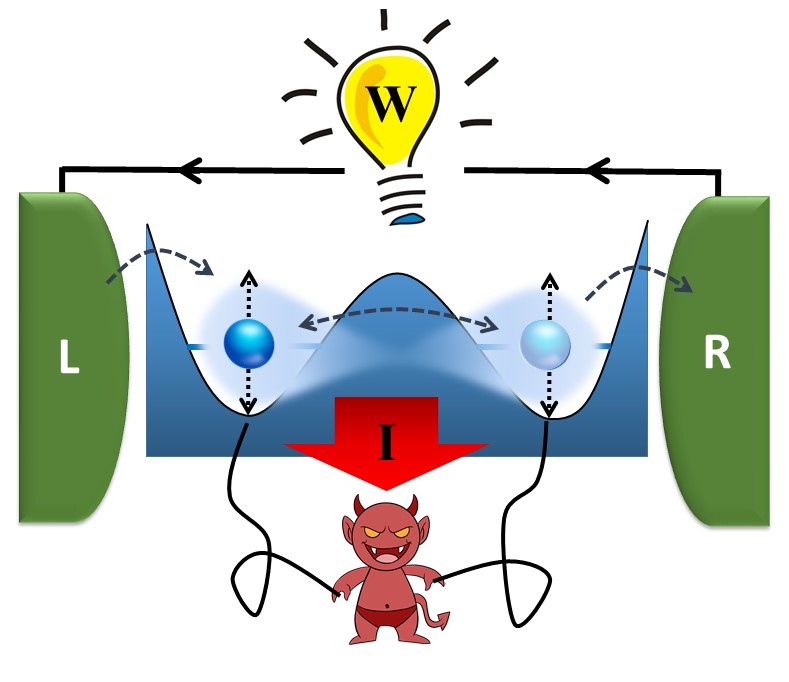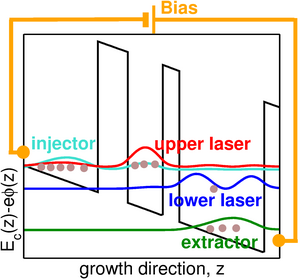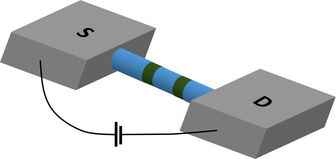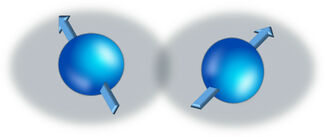Nonequilibrium Nanosystems
Nanoscale and Quantum Thermodynamics
 An interesting scientific question is what happens to thermodynamic concepts such as work, heat and entropy, developed for large machines and engines during the industrial revolution, when we take our investigations to small, nanoscale systems governed by the laws of quantum mechanics. We are investigating these question by theoretically analyzing for example the operation of nanoscale heat engines and refrigerators, the combined transport of energy and electric charge through small conductors and uncertainty relations and fluctuations for thermodynamic properties, always present at the nanoscale. Our research is fundamental in nature, but is sometimes motivated by potential applications. A concrete example is novel ways and methods to convert energy and recover waste heat produced in engines and electronic components. In several of our projects we collaborate directly with experimental colleagues in Lund.
An interesting scientific question is what happens to thermodynamic concepts such as work, heat and entropy, developed for large machines and engines during the industrial revolution, when we take our investigations to small, nanoscale systems governed by the laws of quantum mechanics. We are investigating these question by theoretically analyzing for example the operation of nanoscale heat engines and refrigerators, the combined transport of energy and electric charge through small conductors and uncertainty relations and fluctuations for thermodynamic properties, always present at the nanoscale. Our research is fundamental in nature, but is sometimes motivated by potential applications. A concrete example is novel ways and methods to convert energy and recover waste heat produced in engines and electronic components. In several of our projects we collaborate directly with experimental colleagues in Lund.
In the figure we show a sketch of a nanoscale heat engine where a so called Maxwell's demon is using information about the engine state to control the operation.
Faculty at the division working in the area [links open the person's homepage]:
- Peter Samuelsson
- Andreas Wacker
- Jakob Bengtsson
- Stephanie Reimann
- Claudio Verdozzi
Quantum Cascade Lasers

Quantum cascade lasers are technologically very important devices for infrared and terahertz applications. E.g. they are used by our colleagues at the geology department for measuring greenhouse gases. They are based on inversion between two energy levels in a semiconductor heterostructure. This inversion is fed by well designed tunneling and scattering transitions at the design bias. This is a particular challenge for the modelling of nonequilibrium quantum kinetics in nanosystems and the group of Andreas Wacker is one of the internationally leading groups for the simulation of this device.
Faculty at the division working in the area [links open the person's homepage]:
Quantum Transport
Transport of electrons, or other particles such as phonons and photons, through solid state systems with a critical dimension in the nanometer range is investigated theoretically by several members of the division. By applying for example an electrical or thermal bias across the nanosystem, a nonequilibrium  situation is created where particles, energy, spin or some other physical quantity flows through the system. The small scale and typically low temperatures of the nanosystems make quantum effects important when describing the transport. Quantum transport can be used as a tool to characterize the physical properties of systems like quantum dots, nanowires or molecules, where the interplay of quantum coherence and interactions makes the physics enormously rich, exhibiting a large number of fundamental phenomena.
situation is created where particles, energy, spin or some other physical quantity flows through the system. The small scale and typically low temperatures of the nanosystems make quantum effects important when describing the transport. Quantum transport can be used as a tool to characterize the physical properties of systems like quantum dots, nanowires or molecules, where the interplay of quantum coherence and interactions makes the physics enormously rich, exhibiting a large number of fundamental phenomena.
The picture shows a nanowire coupled to a source and a drain contact.
Faculty at the division working in the area [links open the person's homepage]:
- Peter Samuelsson
- Andreas Wacker
- Claudio Verdozzi
- Stephanie Reimann
Quantum Information and Technology
To initialize, control and measure the properties of quantum states, down to the coherent superposition of individual particle states or the entanglement of coupled particles, is at the heart of quantum information processing and applications in quantum technology. In nanoscale systems this effort is focused at coherently controlling the spin, charge or orbital states of individual or pairs of electrons or systems of electrons coherently coupled to photons or phonons. At the division we work on problems ranging from producing entangled electron pairs in quantum transport, via coherent coupling of electrons t o photons in microwave cavities, to entanglement of correlated few particle quantum states. A lot of the work is performed in close collaboration with experimental colleagues here in Lund. We are motivated both by increasing our knowledge of fundamental quantum physics as well as the prospects of harnessing quantum states in nanoscale systems to perform tasks not possible with classical systems.
o photons in microwave cavities, to entanglement of correlated few particle quantum states. A lot of the work is performed in close collaboration with experimental colleagues here in Lund. We are motivated both by increasing our knowledge of fundamental quantum physics as well as the prospects of harnessing quantum states in nanoscale systems to perform tasks not possible with classical systems.
The picture shows a schematic of two spin-entangled electrons.
Faculty at the division working in the area [links open the person's homepage]:
- Peter Samuelsson
- Claudio Verdozzi
- Stephanie Reimann
